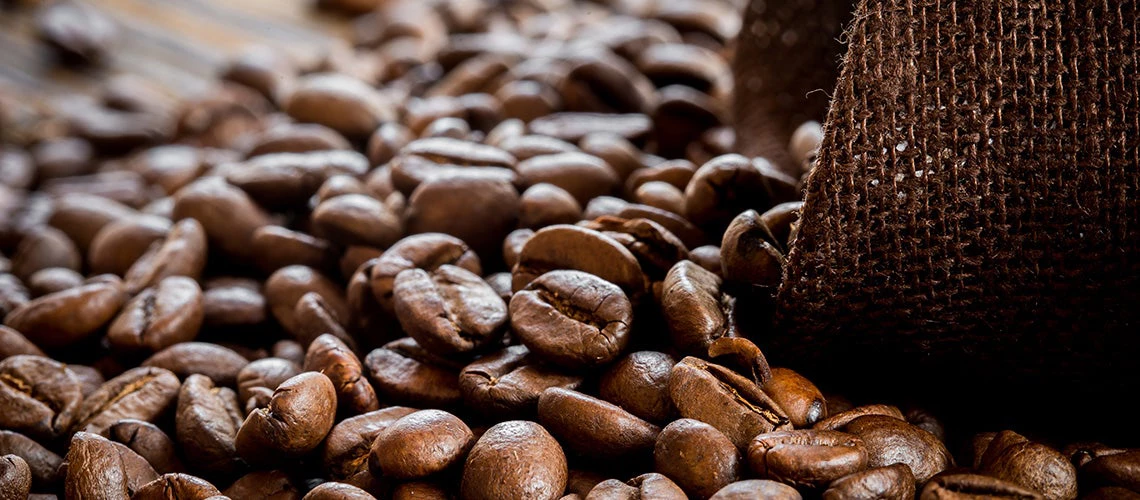 Cofee beans. | © shutterstock.com
Cofee beans. | © shutterstock.com
This blog is the second in a two-part series on commodity market developments, elaborating on themes discussed in the April 2023 edition of the World Bank’s Commodity Markets Outlook.
The April 2023 edition of the World Bank’s Commodity Markets Outlook (CMO) forecasts global food prices to be 7 percent lower in 2023 compared to 2022, before stabilizing in 2024. Grain and oilseed prices are expected to fall by 10 and 14 percent in 2023. This forecast assumes a fairly benign outlook, including no further disruptions from the war in Ukraine and favorable harvests in major grain- and oilseed-producing countries. However, there are many short-term risks and long-term challenges that continue to persist.
Short-term risks
Geopolitics. The ongoing Russian invasion of Ukraine poses a significant risk to wheat, maize, oilseeds, and fertilizer markets, potentially leading to price increases. In mid-March of this year, the renewal of the Black Sea Grain Initiative faced some uncertainty as Ukraine sought a 120-day renewal while Russia agreed to a 60-day arrangement. As the 60-day mark approached on May 18, Russia threatened to withdraw from the pact, creating heightened uncertainty but finally agreed to extend the deal for another two months. Come July this year, the global grains market could again witness new bouts of price volatility because of the uncertainty round the fate of this initiative.
The success of the Black Sea Grain Initiative now carries higher stakes, as agricultural products leaving Ukraine face new challenges in transportation via road, rails, and rivers. In mid-April, Ukraine's EU-member neighbors, which used to provide safe passage for Ukraine’s agricultural products to third countries under an EU agreement, blocked the import and transit of its agricultural products. This action was taken because a significant portion of the produce, originally intended for overseas markets, remained in their countries due to shortages of trains and trucks, which dampened local prices. In late April, the European Commission reached a temporary agreement with Ukraine's EU-neighbors, blocking imports of agricultural products from Ukraine to these countries unless they were transiting to other EU or third countries.
Weather conditions. The likelihood of the El Niño-Southern Oscillation (ENSO) phenomenon forming in the next two months has increased to over 90 percent, according to the U.S. National Oceanic and Atmospheric Administration. This raises concerns about record-warm temperatures and altered precipitation patterns, which could adversely affect crop yields, particularly in the Southern Hemisphere. Commodities such as coffee, rice, palm oil, and natural rubber are particularly sensitive to El Niño effects.
Trade restrictions. Many active trade restrictions on food commodities, including export bans and licensing requirements imposed in 2022 to address inflationary pressures, are set to expire by the end of 2023. If they are allowed to expire as planned, it will mitigate the risk of higher prices by enabling price signals to work by facilitating adjustments by global producers and consumers.
Macroeconomic conditions. Weak global growth may lead to lackluster demand and lower prices for agricultural commodities, especially raw materials. Recent interest rate hikes by central banks to combat inflation has raised the cost of capital, which may constrain borrowing and investments in agricultural production and exports. Fluctuations in the exchange rate of local currencies against the US Dollar and depreciating local currencies in many countries also contributed to food price fluctuations in local markets.
Longer-term challenges
Climate change. Desertification, land degradation, crop failures, and damage to food supply infrastructure are all consequences of climate change. Extreme weather events are more common: rising temperatures will lead to more frequent droughts, impacting highly fertile yet arid regions such as the Mediterranean countries, southern Africa, the western United States, and various grasslands worldwide. The frequency and intensity of extreme rainfall events has also risen. The impact on agricultural production poses upside price risks, potentially leading to a higher probability of food shortages and hunger
Diversion of food commodities to biofuels. The growing production of biofuels in the United States, along with favorable biofuel policies in Brazil, Indonesia, and Malaysia, sustains the demand for ethanol and biodiesel, resulting in continued upward pressure on prices of maize, soybeans, and oilseeds. The global transition to electric vehicles may gradually reduce demand for fossil fuels and ethanol. However, it is unlikely to have a similar impact on biodiesel due to the low prevalence of electric vehicle technology in heavy trucks and machinery that rely on diesel. This shift may lead to acreage changes, with a potential increase in soybean cultivation at the expense of maize, as biodiesel production continues to drive sustained demand for soybeans.



Join the Conversation